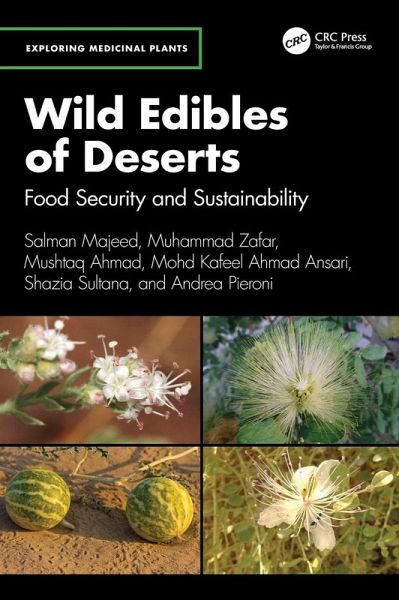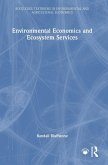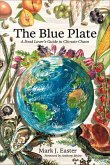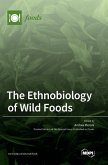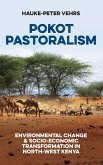Andrea Pieroni, Mohd Kafeel Ahmad Ansari, Muhammad Zafar, Mushtaq Ahmad, Salman Majeed, Shazia Sultana
Wild Edibles of Deserts
Food Security and Sustainability
Andrea Pieroni, Mohd Kafeel Ahmad Ansari, Muhammad Zafar, Mushtaq Ahmad, Salman Majeed, Shazia Sultana
Wild Edibles of Deserts
Food Security and Sustainability
- Gebundenes Buch
- Merkliste
- Auf die Merkliste
- Bewerten Bewerten
- Teilen
- Produkt teilen
- Produkterinnerung
- Produkterinnerung
Global Wild Edibles of Deserts: Food Security and Sustainability provides coverage of topics in food and health in desert rangelands, using an interdisciplinary approach that considers health not only in a functional and human sense, but also in terms of external factors including aridity.
Andere Kunden interessierten sich auch für
![Environmental Economics and Ecosystem Services Environmental Economics and Ecosystem Services]() Randall BluffstoneEnvironmental Economics and Ecosystem Services207,99 €
Randall BluffstoneEnvironmental Economics and Ecosystem Services207,99 €![The Blue Plate The Blue Plate]() Mark EasterThe Blue Plate26,99 €
Mark EasterThe Blue Plate26,99 €![The Ethnobiology of Wild Foods The Ethnobiology of Wild Foods]() The Ethnobiology of Wild Foods111,99 €
The Ethnobiology of Wild Foods111,99 €![Crux Crux]() Robert HamiltonCrux21,99 €
Robert HamiltonCrux21,99 €![Pokot Pastoralism Pokot Pastoralism]() Hauke-Peter VehrsPokot Pastoralism132,99 €
Hauke-Peter VehrsPokot Pastoralism132,99 €![Amanda Holden Amanda Holden]() Amanda Holden20,99 €
Amanda Holden20,99 €![Walk on the Wild Side (TV Series) Walk on the Wild Side (TV Series)]() Walk on the Wild Side (TV Series)20,99 €
Walk on the Wild Side (TV Series)20,99 €-
-
-
Global Wild Edibles of Deserts: Food Security and Sustainability provides coverage of topics in food and health in desert rangelands, using an interdisciplinary approach that considers health not only in a functional and human sense, but also in terms of external factors including aridity.
Hinweis: Dieser Artikel kann nur an eine deutsche Lieferadresse ausgeliefert werden.
Hinweis: Dieser Artikel kann nur an eine deutsche Lieferadresse ausgeliefert werden.
Produktdetails
- Produktdetails
- Verlag: Taylor & Francis Ltd
- Seitenzahl: 232
- Erscheinungstermin: 6. August 2025
- Englisch
- Abmessung: 254mm x 178mm
- Gewicht: 453g
- ISBN-13: 9781032865119
- ISBN-10: 1032865113
- Artikelnr.: 73327598
- Herstellerkennzeichnung
- Libri GmbH
- Europaallee 1
- 36244 Bad Hersfeld
- gpsr@libri.de
- Verlag: Taylor & Francis Ltd
- Seitenzahl: 232
- Erscheinungstermin: 6. August 2025
- Englisch
- Abmessung: 254mm x 178mm
- Gewicht: 453g
- ISBN-13: 9781032865119
- ISBN-10: 1032865113
- Artikelnr.: 73327598
- Herstellerkennzeichnung
- Libri GmbH
- Europaallee 1
- 36244 Bad Hersfeld
- gpsr@libri.de
Dr. Salman Majeed is a young scientist the field of Plant Sciences, particularly his work expertise on Plant Biodiversity and Taxonomic Studies of Deserts. He has published 43 research articles in various journals of good repute in impact factor journal, Google Scholar Citation (citations ±537, H-index 17, i10-index 23) and in diverse fields of Plant Sciences. He has authored 2 International Book and 5 International Book Chapters published by Elsevier, Springer and Talyor & Francis (CRC Press). Salman has participated in a number of conferences held at the national and International Levels. His fields of interest are wild plant biodiversity of desert areas, plant taxonomy, food chemistry, nutraceuticals, palynology anatomy, melissopalynology and medicinal plants ethnobotany. Dr. Muhammad Zafar did Ph.D. in Plant Sciences from Quaid-i-Azam University Islamabad-Pakistan in 2011. Currently, he is working as Associate Professor (Tenured), and Incharge Herbarium (ISL) in the Department of Plant Sciences, Quaid-i-Azam University, Islamabad Pakistan. He is a renowned scientist in the field of medicinal plants, plant biodiversity, and Plant Systematics and Biodiversity. He is the founder of the first Melissopalynology and traditional medicinal plants Labs, Biofuel Lab and Digital Herbarium at Quaid-i-Azam University Islamabad Pakistan. Dr. Zafar has over 350 impact factor publications and ISI Web Sciences (citations ±7500, H-index 42), Google Scholar Citation (citations ±14108, H-index 59, i10-index 296) and in diverse fields of Plant Sciences. In addition to this he is the author of 13 international books and 23 book chapters published largely by Elsevier, Springer, Taylor & Francis, Wiley, etc. across the world. He is the Editorial board member of various journals of repute. He has successfully supervised/produced 18 Ph.D. and 72 M.Phil. research scholars in advanced areas of Plant Systematics & Biodiversity. Productive scientist awards by PCST (2009 to 2017); TTS Awards of Performance based Increment (2016 to 2020); Best research paper award by HEC (2011); Gold Medal (Prof. Dr. Zabta Khan Shinwari Award) from Pakistan Academy of Sciences (PAS) in the field of Biotechnology in 2021 and Gold Medal award by Pakistan Academy of Sciences (2011) in field Botany. His creative work in the University includes the establishment of a digital herbarium, botanical garden renovation, nutraceutical and palynology laboratory for research in the University and linkage with industries for rural and academic development. Professor Dr. Mushtaq Ahmad (T.I) is currently working as Director QAU Botanical Garden and Herbarium (ISL), Director Technology Science Park (QAU) and Chairman Department of Plant Sciences, Faculty of Biological Sciences, Quaid-i- Azam University Islamabad, Pakistan. He is Member & Awardee of IUCN, IBPES, AFOB, FLPH, PAS, TWAS, CAS, NAS, TUBITAK, MEVLANA, HEC, PBS, BSP. He is an elected fellow of Pakistan Academy of Sciences. He has 803 publications (citations ±20372, H-index 69, i10-index 412) in several fields of Plant Sciences including 750 research articles, 26 international books, 25 book chapters published largely by Elsevier, Springer, Taylor & Francis, Wiley etc. across the world including Asia, Europe, USA and Africa. He has successfully supervised/produced 35 PhD, 100 M.Phil. 65 M.Sc. & BS research scholars in advanced areas of Plant Sciences. He has also been awarded various national and international awards in recognition of his outstanding contributions in the field of science and technology including Top 2% influential scientist of the World (2020, 2021, 2022); TUBITAK (Turkey) visiting scientist (2022), Young Research Scholar Award by HEC (2019); Highly Cited Research Paper Award by Elsevier and Willey (2019); Young scientist award by CAS - PIFI - China (2018), Young membership award by Pakistan Academy of Sciences, (2016); Productive scientist awards by PCST (2009 to date); TTS Performance based Awards (2010 to date); Post Doc. Fellowship by TWAS-Malaysia (2012); Best book award by HEC (2013); Best research paper award by HEC (2011); Gold Medal award by Pakistan Academy of Sciences (2011). He is the member of many international and national academic bodies. Prof. Ahmad has been awarded with many research grant projects funded by GBIF, BIFA (Japan-USA), NAS-USA, CAS-China, Mevlana-Turkey, PAS, HEC and TWAS. These research grants helped Prof. Ahmad to establish modern digital Herbarium (ISL), Botanical Garden, Technology Science Park, Melissopalynology, Aerobiology, Nutraceutical and Green Biofuel research laboratories. He has organized 15 and attended 100 International/National Conferences as Keynote speaker. He has been hosted a series of TV programs and YouTube Channel (Info Biodiversity) to aware Global communities, farmers linkages with academia and industries to use plant biodiversity for socio-economic uplifting. Prof. (Dr.) Mohd Kafeel Ahmad Ansari (MSc, PhD, FCRF, ERF¿Australia). Dr. Mohd Kafeel Ahmad Ansari earned his PhD from the Department of Botany, School of Chemical and Life Sciences, Jamia Hamdard University, New Delhi, India. He is currently serving as an Associate Professor of Biology at the University of Guyana, Georgetown, South America. Recently, he has been appointed as a Visiting Research Faculty at the INTI International University, Malaysia. In past, he received an internationally competitive prestigious Endeavour Postdoctoral Research Fellowship Award from Government of Australia, a Foreign Citizen Research Fellowship Award from the Government of Turkey, and Dr. D.S. Kothari Research Fellowship Award, Government of India. He also received many other National and International Awards for Excellence in Higher Education, International Scientist Award, Best Teacher Appreciation Award and International Popular Scientist Award in recognition of his outstanding contributions in the field of plant sciences. He has worked as Visiting Scientist at the University of South Australia, Adelaide, Australia, in the Anadolu University, Turkey and at the Jamia Millia Islamia (Central University), New Delhi, India. He was associated with SP University, India as Associate Professor of Botany. Also, he served as Australian Endeavour Awards Ambassador for higher educational institutions of India. He has more than 15 years of teaching and research experience in plant ecöphysiology, plant stress physiology, industrial and environmental biotechnology, environmental microbiology, microbial genetics, microbiology, molecular biology, aromatics and medicinal plants, plant¿microbe¿soil interactions and phytoremediation technology as well as cyanobacterial research. He has published over 40 research papers in peer¿reviewed international journals, edited three books as a main editor with Taylor & Francis, USA, authored 20 book chapters, cöauthored many book chapters, and currently editing three books with international publishers, including Elsevier, Springer Nature, and CRC Press (Taylor & Francis Group), etc. He has successfully supervised 02 PhD, 10 M.Sc. and 10 BS research scholars in multidisciplinary research areas including Cyanobacterial biotechnology, Medicinal Botany, Microbiology and Plant Sciences at national and international level. He has received several grants for his international research projects. He served as member of Departmental Research Committee, Academic Council, Board of Research Studies, Faculty Board, Faculty Representative and Advisory Board for Graduate Studies and Research at various universities of the world. He has been engaging with several professional memberships of India, Dubai, Italy, Germany, Hong Kong, Japan, Spain and USA. He has attended various national and international conferences and invited talk. Due to his diverse expertise in interdisciplinary research, he has in a high demand as an external PhD thesis examiner worldwide. He also figured in various Scientific Committees globally and also placed in AD Scientific index. At present, he is serving as a member of many editorial boards and a reviewer of a number of high impacts international scientific journals. He has been involved with international and multidisciplinary research projects globally. Dr. Shazia Sultana is young scientist in the field of Plant Biology and Biodiversity & Non timber Forest products. 300 research publications (to date) in top international journals, more than 9500 citations, with 650 impact factor, H-index 55 & I-indexx 170. 12 international books published and circulated internationally. Dr. Sultana is awardee of various national and international awards. She is selected as young lady from Pakistan by Institute of Post Graduate studies, USM Malaysia, Higher Education Commission, and Pakistan Council for Science and Technology. She is also the Editorial Board Member of many well reputed ISI journals and book series. Currently, she is supervising and working on number of research projects on plant biodiversity, Aerobiology, palynology, Moist Himalayan and tropical forests, New Energy & low carbon technology using forest diversity, ecology and conservation. Prof. Dr. Andrea Pieroni is trained in medical botany at the University of Pisa, Professor Andrea Pieroni earned his doctorate from the University of Bonn in Germany. He has worked as a Research Assistant at the University of London (2000-2003) and as a tenured Lecturer and, later, Senior Lecturer at the University of Bradford in northern England (2003-2009). In 2009 he has been hired as Professor of Ethnobotany at the University of Pollenzo, Italy, of which he has been the Vice Chancellor from 2017 to 2021. Professor Pieroni has served as the Vice-President and President of the International Society of Ethnobiology (2008-2010), he is the founder and Chief Editor of the Journal of Ethnobiology and Ethnomedicine and sits on the boards of diverse international peer-reviewed journals. His main research focus is on temporal and diachronic changes of local plant knowledge among minorities, diasporas, cultural and geographical boundaries in the Mediterranean, the Balkans, Eastern Europe, and the Middle East. According to a study of the Stanford University, in 2022 he was among the top 1% of the most quoted worldwide scientists.
Chapter 1: Introduction
1.1 Why are deserts trendy?
1.2 Extent of Climate Aridity in the Deserts
1.3 Sustainable Land Use and Desertification
1.3.1 Desertification: Causes and Impacts
1.3.2 Importance of Sustainable Land Use
1.3.3 Strategies for Combating Desertification
1.3.4 Case Studies in Successful Desertification Mitigation
a) The Loess Plateau, China
b) Israel Negev Desert
c) Great Green Wall, Africa
d) Rewetting Peatlands in Indonesia
e) Sustainable Land Management in Niger
1.3.5 Policy Frameworks and International Cooperation
1.4 Conclusion and Implications
References
Chapter 2: Brief Overview of Deserts of the World (Ecology, Climate, flora,
Population)
2.1 South Asian Deserts
2.1.1 Thar Desert
2.1.2 Cholistan Desert
2.1.3 Kutch Desert
2.1.4 Thal Desert
2.1.5 Cold Deserts
2.2 Central Asian Deserts
2.3 Arabic Deserts
2.4 African Deserts
2.4.1 Sahara Desert
2.4.2 Namib Desert
2.5 European Deserts
2.6 Latin American Deserts
2.6.1 Atacama Desert
2.6.2 Sonoran Desert
2.6.3 Chihuahuan Desert
References
Chapter 3: Traditional Wild Edibles (WEs) of the Deserts: Reservoir of
Ethnomedicine
3.1 Desert legumes as a source of protein in human diets
3.1.1 Acacia jacquemontii Benth.
3.1.2 Acacia nilotica (L.) Willd. ex Delile
3.1.3 Acacia modesta (Linn.) Wall.
3.1.4 Albizia lebbeck (L.) Benth.
3.1.5 Prosopis cineraria (Linn.) Druce
3.1.6 Cyamopsis tetragonoloba (L.) Taub)
3.1.7 Crotalaria burhia Buch.-Ham. ex Benth.
3.1.8 Parkinsonia aculeata L.
3.1.9 Prosopis juliflora (Swartz) DC
3.1.10 Tephrosia purpurea (L.) Pers.
3.2 Prickly pear: Low-cost forage crop for supplementing food security
3.2.1 Opuntia dillenii (Ker Gawl.)
3.3 Ethnopharmacological status of WEs of family Capparaceae
3.3.1 Capparis decidua Edgew (Forssk.)
3.3.2 Capparis spinosa L.
3.3.3 Cleome brachycarpa Vahl ex DC.
3.4 WEs Cucurbitaceous species: Therapeutic effect on human health
3.4.1 Citrullus colocynthis (L.) Schrad
3.4.2 Cucumis melo L.
3.4.3 Cucurbita maxima Duchesne
3.4.4 Luffa cylindrica (L.) M.Roem
3.4.5 Momordica charantia L.
3.4.6 Mukia maderaspatana (L.) M.Roem
3.5 Nutritional aspects of Drought-Resistance Rhamnaceous Wes
3.5.1 Ziziphus nummularia (Burm.f.) Wight & Arn.
3.5.2 Ziziphus jujuba Mill.
3.6 Biochemical therapeutic uses of Desert WEs of Zygophyllaceae
3.6.1 Fagonia cretica Linn.
3.6.2 Tribulus terrestris L.
References
Chapter 4: Economic Botany of the Deserts WEs: Source of Food and Nutrition
4.1 WEs: Combating Food and Health Security
4.1.1 Nutritional Benefits of WEs in Arid Regions
4.1.2 Sustainable Harvesting Practices for Desert Foraging
4.1.3 Cultural Significance and Traditional Knowledge of Wild Foods
4.1.4 Wild Edibles as a Strategy for Food Security and Ecological
Resilience
4.1.5 Policy Recommendations for Promoting Wild Edibles in Desert Economies
4.2 WEs: Nutritional value and Dietary Requirements
4.3 Knowledge, Marketing and Finance of desert Wes
4.4 WEs: Functional Foods and Health
4.5 Healthy sustainable diets of desert Wes
References
Chapter 5: Deserts WEs, Climate Change and Ecological Transition
5.1 Desert Wild edibles can meet the needs of future generations
5.2 Global desert WEs nutritional initiatives for a healthier food system.
5.3 WEs: Sustainable management by indigenous communities of Desert
5.4 WEs Dietary development: Ecosystem conservation and Sustainability
5.5 Unlocking desert WEs resources to promote sustainable agriculture
5.6 Promoting WEs in the Desert: Future Implications towards sustainable
value chain
References
1.1 Why are deserts trendy?
1.2 Extent of Climate Aridity in the Deserts
1.3 Sustainable Land Use and Desertification
1.3.1 Desertification: Causes and Impacts
1.3.2 Importance of Sustainable Land Use
1.3.3 Strategies for Combating Desertification
1.3.4 Case Studies in Successful Desertification Mitigation
a) The Loess Plateau, China
b) Israel Negev Desert
c) Great Green Wall, Africa
d) Rewetting Peatlands in Indonesia
e) Sustainable Land Management in Niger
1.3.5 Policy Frameworks and International Cooperation
1.4 Conclusion and Implications
References
Chapter 2: Brief Overview of Deserts of the World (Ecology, Climate, flora,
Population)
2.1 South Asian Deserts
2.1.1 Thar Desert
2.1.2 Cholistan Desert
2.1.3 Kutch Desert
2.1.4 Thal Desert
2.1.5 Cold Deserts
2.2 Central Asian Deserts
2.3 Arabic Deserts
2.4 African Deserts
2.4.1 Sahara Desert
2.4.2 Namib Desert
2.5 European Deserts
2.6 Latin American Deserts
2.6.1 Atacama Desert
2.6.2 Sonoran Desert
2.6.3 Chihuahuan Desert
References
Chapter 3: Traditional Wild Edibles (WEs) of the Deserts: Reservoir of
Ethnomedicine
3.1 Desert legumes as a source of protein in human diets
3.1.1 Acacia jacquemontii Benth.
3.1.2 Acacia nilotica (L.) Willd. ex Delile
3.1.3 Acacia modesta (Linn.) Wall.
3.1.4 Albizia lebbeck (L.) Benth.
3.1.5 Prosopis cineraria (Linn.) Druce
3.1.6 Cyamopsis tetragonoloba (L.) Taub)
3.1.7 Crotalaria burhia Buch.-Ham. ex Benth.
3.1.8 Parkinsonia aculeata L.
3.1.9 Prosopis juliflora (Swartz) DC
3.1.10 Tephrosia purpurea (L.) Pers.
3.2 Prickly pear: Low-cost forage crop for supplementing food security
3.2.1 Opuntia dillenii (Ker Gawl.)
3.3 Ethnopharmacological status of WEs of family Capparaceae
3.3.1 Capparis decidua Edgew (Forssk.)
3.3.2 Capparis spinosa L.
3.3.3 Cleome brachycarpa Vahl ex DC.
3.4 WEs Cucurbitaceous species: Therapeutic effect on human health
3.4.1 Citrullus colocynthis (L.) Schrad
3.4.2 Cucumis melo L.
3.4.3 Cucurbita maxima Duchesne
3.4.4 Luffa cylindrica (L.) M.Roem
3.4.5 Momordica charantia L.
3.4.6 Mukia maderaspatana (L.) M.Roem
3.5 Nutritional aspects of Drought-Resistance Rhamnaceous Wes
3.5.1 Ziziphus nummularia (Burm.f.) Wight & Arn.
3.5.2 Ziziphus jujuba Mill.
3.6 Biochemical therapeutic uses of Desert WEs of Zygophyllaceae
3.6.1 Fagonia cretica Linn.
3.6.2 Tribulus terrestris L.
References
Chapter 4: Economic Botany of the Deserts WEs: Source of Food and Nutrition
4.1 WEs: Combating Food and Health Security
4.1.1 Nutritional Benefits of WEs in Arid Regions
4.1.2 Sustainable Harvesting Practices for Desert Foraging
4.1.3 Cultural Significance and Traditional Knowledge of Wild Foods
4.1.4 Wild Edibles as a Strategy for Food Security and Ecological
Resilience
4.1.5 Policy Recommendations for Promoting Wild Edibles in Desert Economies
4.2 WEs: Nutritional value and Dietary Requirements
4.3 Knowledge, Marketing and Finance of desert Wes
4.4 WEs: Functional Foods and Health
4.5 Healthy sustainable diets of desert Wes
References
Chapter 5: Deserts WEs, Climate Change and Ecological Transition
5.1 Desert Wild edibles can meet the needs of future generations
5.2 Global desert WEs nutritional initiatives for a healthier food system.
5.3 WEs: Sustainable management by indigenous communities of Desert
5.4 WEs Dietary development: Ecosystem conservation and Sustainability
5.5 Unlocking desert WEs resources to promote sustainable agriculture
5.6 Promoting WEs in the Desert: Future Implications towards sustainable
value chain
References
Chapter 1: Introduction
1.1 Why are deserts trendy?
1.2 Extent of Climate Aridity in the Deserts
1.3 Sustainable Land Use and Desertification
1.3.1 Desertification: Causes and Impacts
1.3.2 Importance of Sustainable Land Use
1.3.3 Strategies for Combating Desertification
1.3.4 Case Studies in Successful Desertification Mitigation
a) The Loess Plateau, China
b) Israel Negev Desert
c) Great Green Wall, Africa
d) Rewetting Peatlands in Indonesia
e) Sustainable Land Management in Niger
1.3.5 Policy Frameworks and International Cooperation
1.4 Conclusion and Implications
References
Chapter 2: Brief Overview of Deserts of the World (Ecology, Climate, flora,
Population)
2.1 South Asian Deserts
2.1.1 Thar Desert
2.1.2 Cholistan Desert
2.1.3 Kutch Desert
2.1.4 Thal Desert
2.1.5 Cold Deserts
2.2 Central Asian Deserts
2.3 Arabic Deserts
2.4 African Deserts
2.4.1 Sahara Desert
2.4.2 Namib Desert
2.5 European Deserts
2.6 Latin American Deserts
2.6.1 Atacama Desert
2.6.2 Sonoran Desert
2.6.3 Chihuahuan Desert
References
Chapter 3: Traditional Wild Edibles (WEs) of the Deserts: Reservoir of
Ethnomedicine
3.1 Desert legumes as a source of protein in human diets
3.1.1 Acacia jacquemontii Benth.
3.1.2 Acacia nilotica (L.) Willd. ex Delile
3.1.3 Acacia modesta (Linn.) Wall.
3.1.4 Albizia lebbeck (L.) Benth.
3.1.5 Prosopis cineraria (Linn.) Druce
3.1.6 Cyamopsis tetragonoloba (L.) Taub)
3.1.7 Crotalaria burhia Buch.-Ham. ex Benth.
3.1.8 Parkinsonia aculeata L.
3.1.9 Prosopis juliflora (Swartz) DC
3.1.10 Tephrosia purpurea (L.) Pers.
3.2 Prickly pear: Low-cost forage crop for supplementing food security
3.2.1 Opuntia dillenii (Ker Gawl.)
3.3 Ethnopharmacological status of WEs of family Capparaceae
3.3.1 Capparis decidua Edgew (Forssk.)
3.3.2 Capparis spinosa L.
3.3.3 Cleome brachycarpa Vahl ex DC.
3.4 WEs Cucurbitaceous species: Therapeutic effect on human health
3.4.1 Citrullus colocynthis (L.) Schrad
3.4.2 Cucumis melo L.
3.4.3 Cucurbita maxima Duchesne
3.4.4 Luffa cylindrica (L.) M.Roem
3.4.5 Momordica charantia L.
3.4.6 Mukia maderaspatana (L.) M.Roem
3.5 Nutritional aspects of Drought-Resistance Rhamnaceous Wes
3.5.1 Ziziphus nummularia (Burm.f.) Wight & Arn.
3.5.2 Ziziphus jujuba Mill.
3.6 Biochemical therapeutic uses of Desert WEs of Zygophyllaceae
3.6.1 Fagonia cretica Linn.
3.6.2 Tribulus terrestris L.
References
Chapter 4: Economic Botany of the Deserts WEs: Source of Food and Nutrition
4.1 WEs: Combating Food and Health Security
4.1.1 Nutritional Benefits of WEs in Arid Regions
4.1.2 Sustainable Harvesting Practices for Desert Foraging
4.1.3 Cultural Significance and Traditional Knowledge of Wild Foods
4.1.4 Wild Edibles as a Strategy for Food Security and Ecological
Resilience
4.1.5 Policy Recommendations for Promoting Wild Edibles in Desert Economies
4.2 WEs: Nutritional value and Dietary Requirements
4.3 Knowledge, Marketing and Finance of desert Wes
4.4 WEs: Functional Foods and Health
4.5 Healthy sustainable diets of desert Wes
References
Chapter 5: Deserts WEs, Climate Change and Ecological Transition
5.1 Desert Wild edibles can meet the needs of future generations
5.2 Global desert WEs nutritional initiatives for a healthier food system.
5.3 WEs: Sustainable management by indigenous communities of Desert
5.4 WEs Dietary development: Ecosystem conservation and Sustainability
5.5 Unlocking desert WEs resources to promote sustainable agriculture
5.6 Promoting WEs in the Desert: Future Implications towards sustainable
value chain
References
1.1 Why are deserts trendy?
1.2 Extent of Climate Aridity in the Deserts
1.3 Sustainable Land Use and Desertification
1.3.1 Desertification: Causes and Impacts
1.3.2 Importance of Sustainable Land Use
1.3.3 Strategies for Combating Desertification
1.3.4 Case Studies in Successful Desertification Mitigation
a) The Loess Plateau, China
b) Israel Negev Desert
c) Great Green Wall, Africa
d) Rewetting Peatlands in Indonesia
e) Sustainable Land Management in Niger
1.3.5 Policy Frameworks and International Cooperation
1.4 Conclusion and Implications
References
Chapter 2: Brief Overview of Deserts of the World (Ecology, Climate, flora,
Population)
2.1 South Asian Deserts
2.1.1 Thar Desert
2.1.2 Cholistan Desert
2.1.3 Kutch Desert
2.1.4 Thal Desert
2.1.5 Cold Deserts
2.2 Central Asian Deserts
2.3 Arabic Deserts
2.4 African Deserts
2.4.1 Sahara Desert
2.4.2 Namib Desert
2.5 European Deserts
2.6 Latin American Deserts
2.6.1 Atacama Desert
2.6.2 Sonoran Desert
2.6.3 Chihuahuan Desert
References
Chapter 3: Traditional Wild Edibles (WEs) of the Deserts: Reservoir of
Ethnomedicine
3.1 Desert legumes as a source of protein in human diets
3.1.1 Acacia jacquemontii Benth.
3.1.2 Acacia nilotica (L.) Willd. ex Delile
3.1.3 Acacia modesta (Linn.) Wall.
3.1.4 Albizia lebbeck (L.) Benth.
3.1.5 Prosopis cineraria (Linn.) Druce
3.1.6 Cyamopsis tetragonoloba (L.) Taub)
3.1.7 Crotalaria burhia Buch.-Ham. ex Benth.
3.1.8 Parkinsonia aculeata L.
3.1.9 Prosopis juliflora (Swartz) DC
3.1.10 Tephrosia purpurea (L.) Pers.
3.2 Prickly pear: Low-cost forage crop for supplementing food security
3.2.1 Opuntia dillenii (Ker Gawl.)
3.3 Ethnopharmacological status of WEs of family Capparaceae
3.3.1 Capparis decidua Edgew (Forssk.)
3.3.2 Capparis spinosa L.
3.3.3 Cleome brachycarpa Vahl ex DC.
3.4 WEs Cucurbitaceous species: Therapeutic effect on human health
3.4.1 Citrullus colocynthis (L.) Schrad
3.4.2 Cucumis melo L.
3.4.3 Cucurbita maxima Duchesne
3.4.4 Luffa cylindrica (L.) M.Roem
3.4.5 Momordica charantia L.
3.4.6 Mukia maderaspatana (L.) M.Roem
3.5 Nutritional aspects of Drought-Resistance Rhamnaceous Wes
3.5.1 Ziziphus nummularia (Burm.f.) Wight & Arn.
3.5.2 Ziziphus jujuba Mill.
3.6 Biochemical therapeutic uses of Desert WEs of Zygophyllaceae
3.6.1 Fagonia cretica Linn.
3.6.2 Tribulus terrestris L.
References
Chapter 4: Economic Botany of the Deserts WEs: Source of Food and Nutrition
4.1 WEs: Combating Food and Health Security
4.1.1 Nutritional Benefits of WEs in Arid Regions
4.1.2 Sustainable Harvesting Practices for Desert Foraging
4.1.3 Cultural Significance and Traditional Knowledge of Wild Foods
4.1.4 Wild Edibles as a Strategy for Food Security and Ecological
Resilience
4.1.5 Policy Recommendations for Promoting Wild Edibles in Desert Economies
4.2 WEs: Nutritional value and Dietary Requirements
4.3 Knowledge, Marketing and Finance of desert Wes
4.4 WEs: Functional Foods and Health
4.5 Healthy sustainable diets of desert Wes
References
Chapter 5: Deserts WEs, Climate Change and Ecological Transition
5.1 Desert Wild edibles can meet the needs of future generations
5.2 Global desert WEs nutritional initiatives for a healthier food system.
5.3 WEs: Sustainable management by indigenous communities of Desert
5.4 WEs Dietary development: Ecosystem conservation and Sustainability
5.5 Unlocking desert WEs resources to promote sustainable agriculture
5.6 Promoting WEs in the Desert: Future Implications towards sustainable
value chain
References

